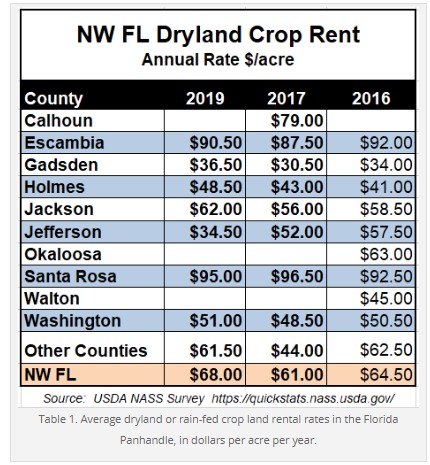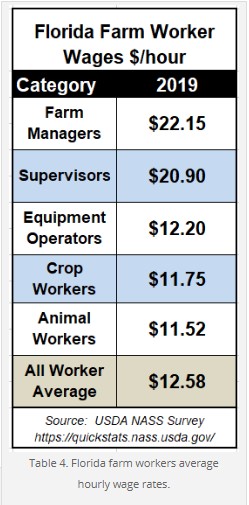By Doug Mayo
Some of the most challenging conversations, in almost any relationship, are the ones about money. This is certainly true as farmers and landowners negotiate lease agreements, or managers and workers negotiate salaries for the year ahead. It can be pretty challenging to determine a “fair price” for rent of a specific farm, or to set the wages for the skill sets of a specific employee. However, if you know the average rates, based on actual farm survey data , it does provide an unbiased place to start the negotiations. As with all statistics, just knowing the average is only part of the story, but at least it offers a reference point for both parties to begin those awkward conversations.
Farm Land Rental Rates
The USDA’s National Agricultural Statistic Service (NASS) annually surveys farm owners/managers to provide average land rental rates. Unfortunately their survey summary does not offer the range of rates paid, but does offer county, regional, or state averages. There are a number of factors that influence the rental value of farm land. Certainly farm size, crop history, soil type, and location influence lease the rate a farmer is willing to offer. A large, 300 acre field would be more attractive to rent than 15 acres, or a farm next door to an existing operation is more valuable than an operation 10 miles away. The amount of Peanut Base Acreage assigned to the land also plays a role in setting the value of crop land rental rates. Certainly the market for different commodities also plays a role. If the cattle prices are lower this year, demand for pasture rental may not be as great.
The following is a summary of the information NASS provides on average land rental rates for Northwest Florida, from biannual surveys. Table 1 provides the average rate for renting non-irrigated, or dryland crop land, by county. The average for the whole Panhandle region in 2019 was $68 per acre, per year. There was significant variation from county to county, with a high of $95/acre in Santa Rosa to a low of $36.50/acre in Gadsden County. NASS is no longer reporting data for each individual county in the Panhandle, so data from counties not listed was included in the “Other Counties” category.

Since there are not as many irrigated farms, NASS only reports their survey results for Jackson and “Other Counties,” and by region. Irrigated crop land is generally more productive and more consistent, so the lease rates are generally much higher per acre. Table 2 shows the variation in irrigated farm lease rates in the tri-states region, with an average of $193/acre for the Southeast in 2019. Notice however, the average rental rates were much lower in Southwest Alabama ($148/a), and Northwest Florida ($177/a), than in Southwest Georgia ($218/a).
Pasture Rental Rates
Pasture rental rates were also surveyed. Pasture lease rates are considerably lower than crop land, because livestock generate a much lower return per acre. Table 3 illustrates the range of average pasture rent from $29/acre in Other Counties to $43/acre in Calhoun County. The average pasture rent for the entire Panhandle was $34.50/acre in 2019.
Farm Labor Wages

The other challenge that farmers and ranchers face is knowing what is a fair rate to pay their hired workers. NASS only reports farm workers in general categories, so the averages provided in Table 4 may not fit every specific type of worker. However, in 2019 they did add a few new categories, which include managers, supervisors, and equipment operators. NASS does not provide county or even district worker wage summaries, so this information was derived from the entire state of Florida. On average, Florida farm workers earned $12.58/hour in 2019. Farm labor wages ranged from $11.52/hour for livestock workers (poultry, dairy, and beef cattle) to $22.15/hour for farm managers.
Competition for labor has driven wages up for farm workers nationally. A recent article in USDA’s Amber Waves Magazine from the Economic Research Service included Figure 5 below. The autors of the article said, “Between 2014 and 2018, the average hourly real wage for nonsupervisory hired farmworkers (in 2018 dollars) rose from $12.00 to $13.25, an increase of 10.4 percent. This increase in the real wage for farm labor is the fastest experienced over a 4-year period during the past two decades. Growth in farmworker wages was faster than growth in nonfarm wages. Over the period 2014-18, the hourly real wage for all nonsupervisory production workers outside agriculture rose from $21.90 to $22.97 (in 2018 dollars), an increase of 3.5 percent.”